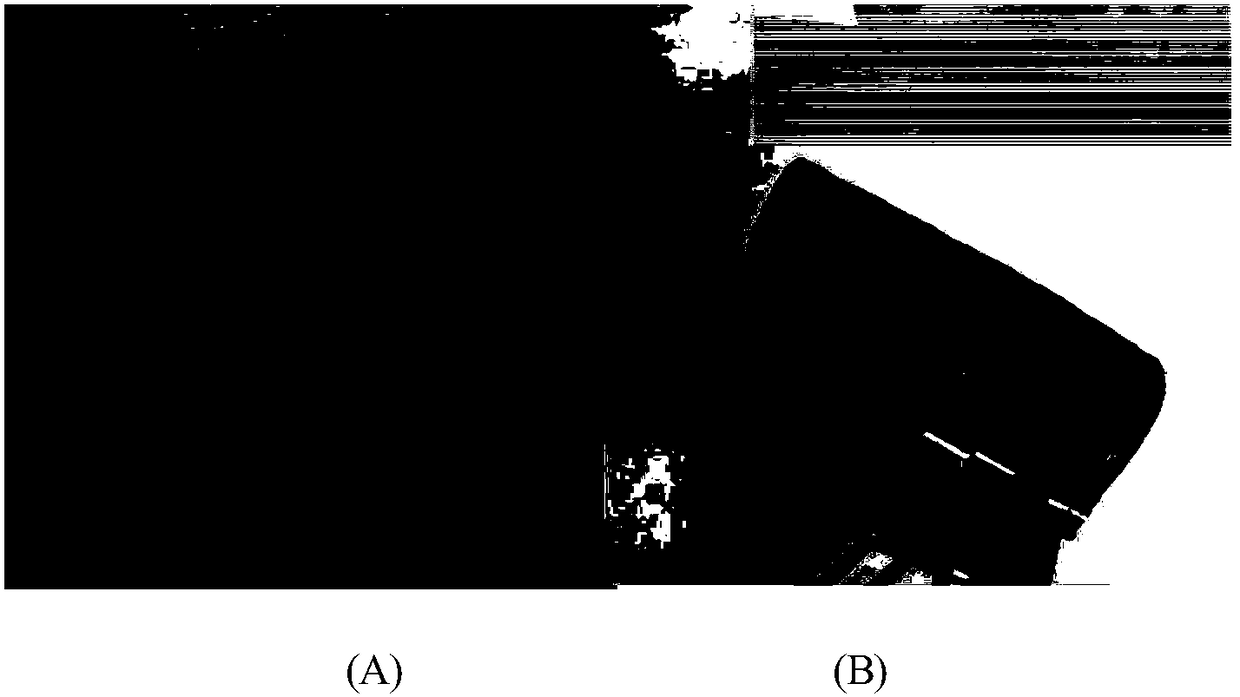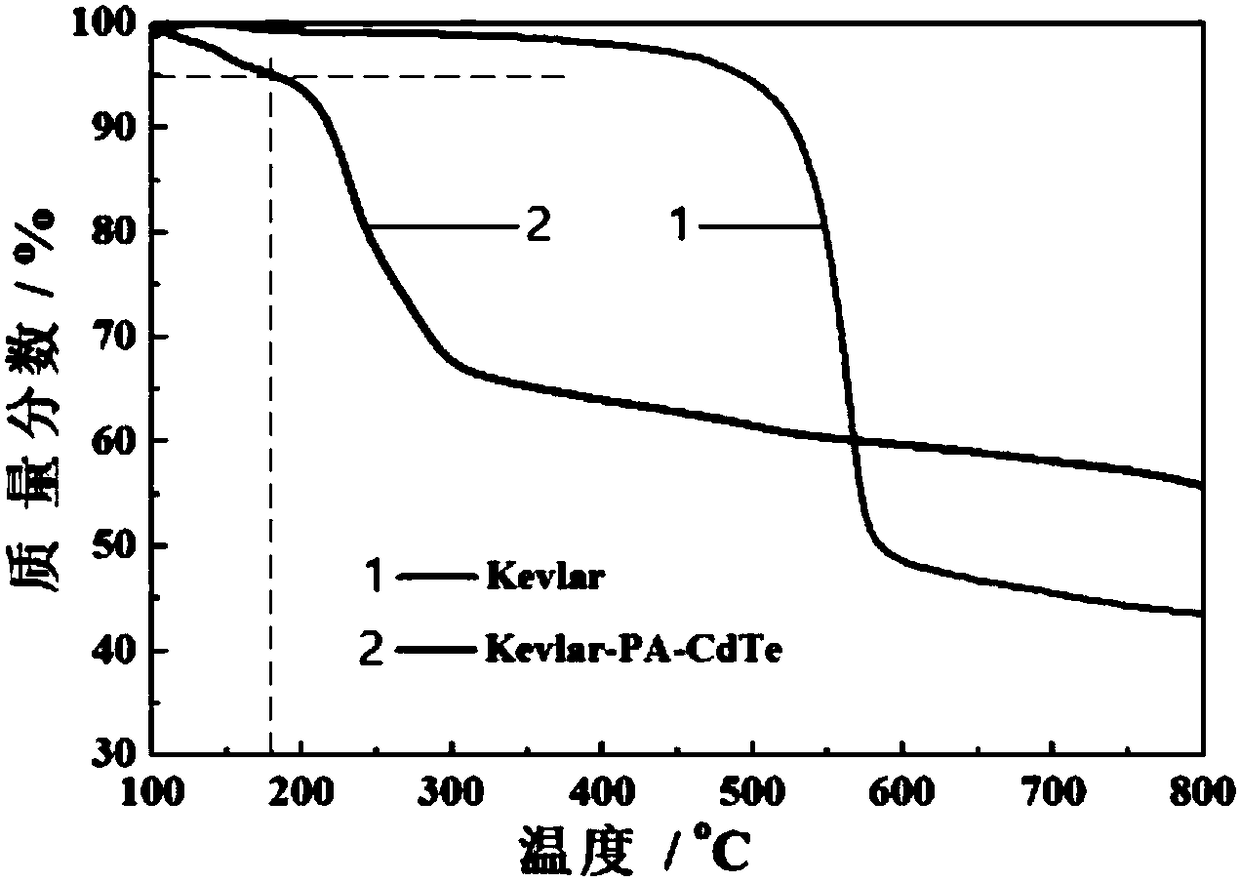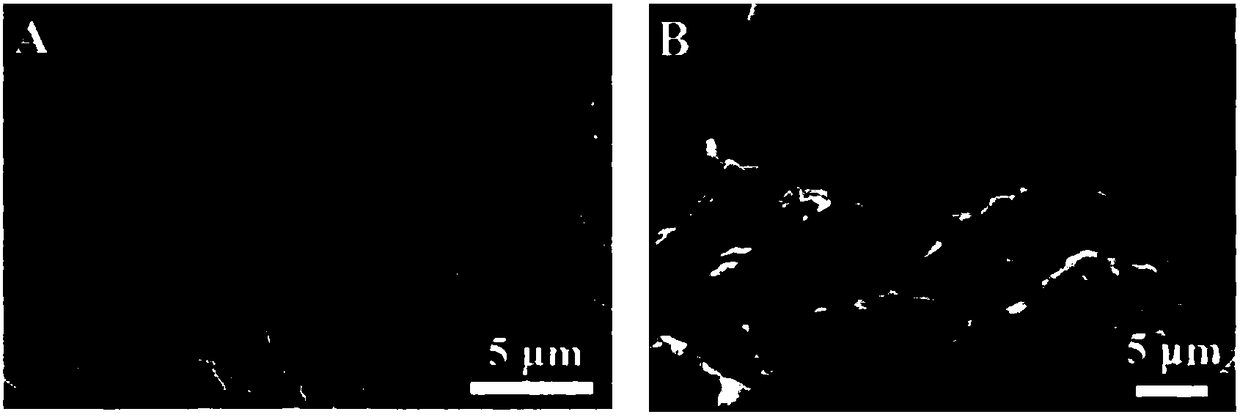Method for preparing phosphoric acid doped high temperature proton exchange membrane with layer-by-layer assembly structure based on spin coating technique
A proton exchange membrane, layer-by-layer assembly technology, used in fuel cells, electrochemical generators, electrical components, etc., can solve problems such as weak interfacial force, achieve improved ability, good proton conductivity, and be conducive to proton conduction. Effect
- Summary
- Abstract
- Description
- Claims
- Application Information
AI Technical Summary
Problems solved by technology
Method used
Image
Examples
Embodiment 1
[0032] (1) Add 500ml of dimethyl sulfoxide, 5g of Kevlar nanofibers, and 3g of potassium hydroxide to a 1000ml stoppered reagent bottle, and stir for 5-7 days to form a homogeneous Kevlar nanofiber with a concentration of 10g / L solution.
[0033] (2) At 20-35°C, drop 5ml of Kevlar nanometer on the glass slide treated with piranha solution (concentrated sulfuric acid with a concentration of 98wt% and a concentration of 30wt% hydrogen peroxide in a volume ratio of 7:3) Fiber homogeneous solution, after spin coating for 20 seconds at a speed of 1500 rpm on a spin coater, soak the glass piece in deionized water for 5-10 seconds.
[0034] (3) At 20-35°C, drop 1ml of cadmium telluride aqueous solution on the glass sheet, bake in 80°C oven for 4 hours, add 4ml of cadmium telluride aqueous solution again, and continue to bake in 80°C oven for 4 hours.
[0035] (4) At 20-35° C., 2 ml of phosphoric acid solution with a concentration of 85% was added dropwise on the glass slide, and spi...
Embodiment 2
[0041] (1) Add 450ml of dimethyl sulfoxide, 4g of Kevlar nanofibers, and 2g of potassium hydroxide to a 1000ml stoppered reagent bottle, and stir for 5-7 days to form a homogeneous Kevlar nanofiber with a concentration of 9g / L solution.
[0042] (2) At 20-35°C, add 6ml of Kevlar nanometer dropwise on the glass slide treated with piranha solution (concentrated sulfuric acid with a concentration of 98wt% and a concentration of 30wt% hydrogen peroxide in a volume ratio of 7:3) Fiber homogeneous solution, after spin-coating on a spin-coater at a speed of 1000 rpm for 15 seconds, soak the glass piece in deionized water for 5-10 seconds.
[0043] (3) At 20-35°C, drop 1ml of cadmium telluride aqueous solution on the glass sheet, bake in a 75°C oven for 4 hours, add 4ml of cadmium telluride aqueous solution again, and continue to bake in a 75°C oven for 4 hours.
[0044] (4) At 20-35° C., drop 2 ml of phosphoric acid solution with a concentration of 85% on the glass slide, and spin-c...
Embodiment 3
[0050] (1) Add 550ml of dimethyl sulfoxide, 6g of Kevlar nanofibers, and 4g of potassium hydroxide to a 1000ml stoppered reagent bottle, and stir for 5-7 days to form a homogeneous Kevlar nanofiber with a concentration of 11g / L solution.
[0051] (2) At 20-35°C, drop 4ml of Kevlar nanometer on the glass slide treated with piranha solution (concentrated sulfuric acid with a concentration of 98wt% and a concentration of 30wt% hydrogen peroxide in a volume ratio of 7:3) Fiber homogeneous solution, after spin-coating on a spin-coater at 500 rpm for 25 seconds, soak glass slides in deionized water for 5-10 seconds.
[0052] (3) At 20-35°C, drop 1ml of cadmium telluride aqueous solution on the glass sheet, bake in 85°C oven for 4 hours, add 4ml of cadmium telluride aqueous solution again, and continue to bake in 85°C oven for 4 hours.
[0053] (4) At 20-35° C., drop 2 ml of a phosphoric acid solution with a concentration of 85% on the glass slide, and spin coat it on a spin coater ...
PUM
| Property | Measurement | Unit |
|---|---|---|
| thickness | aaaaa | aaaaa |
| thickness | aaaaa | aaaaa |
| thickness | aaaaa | aaaaa |
Abstract
Description
Claims
Application Information
 Login to View More
Login to View More - R&D
- Intellectual Property
- Life Sciences
- Materials
- Tech Scout
- Unparalleled Data Quality
- Higher Quality Content
- 60% Fewer Hallucinations
Browse by: Latest US Patents, China's latest patents, Technical Efficacy Thesaurus, Application Domain, Technology Topic, Popular Technical Reports.
© 2025 PatSnap. All rights reserved.Legal|Privacy policy|Modern Slavery Act Transparency Statement|Sitemap|About US| Contact US: help@patsnap.com



